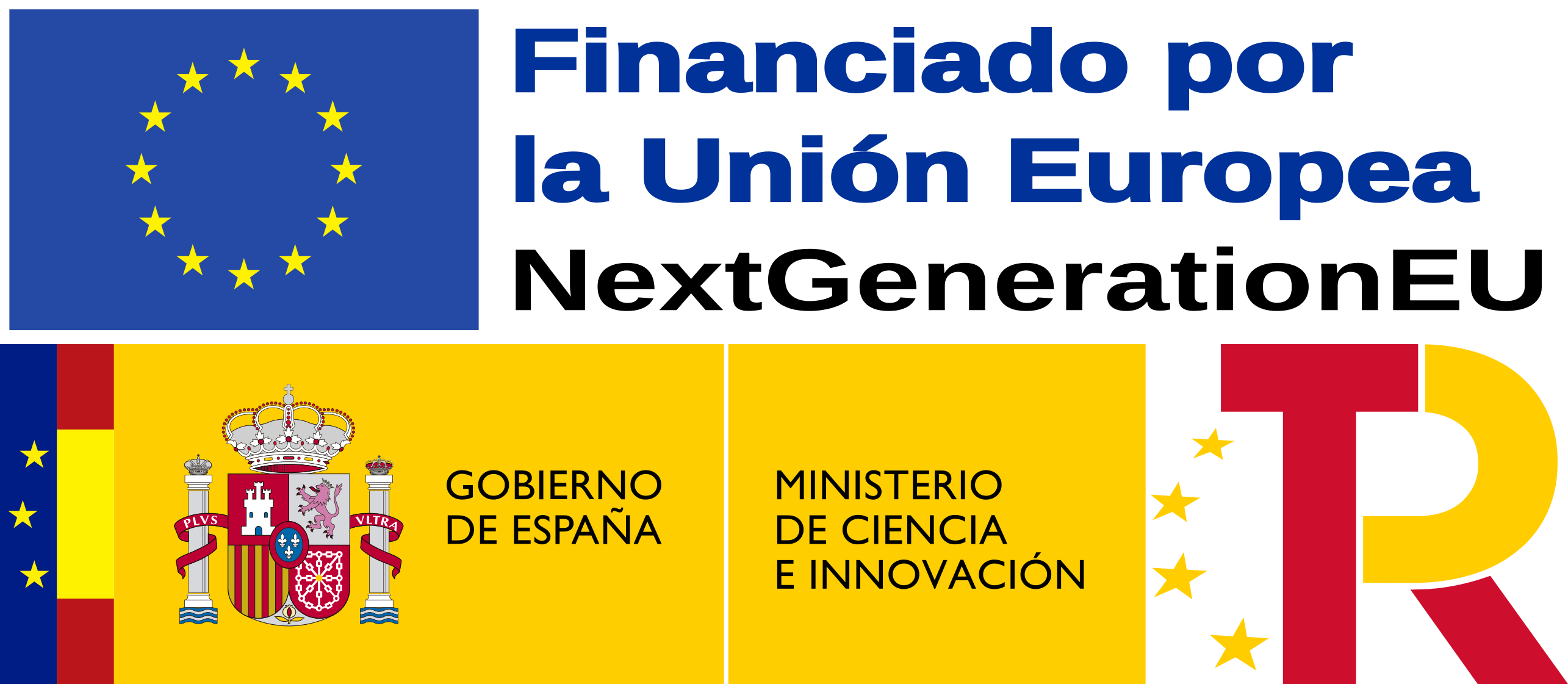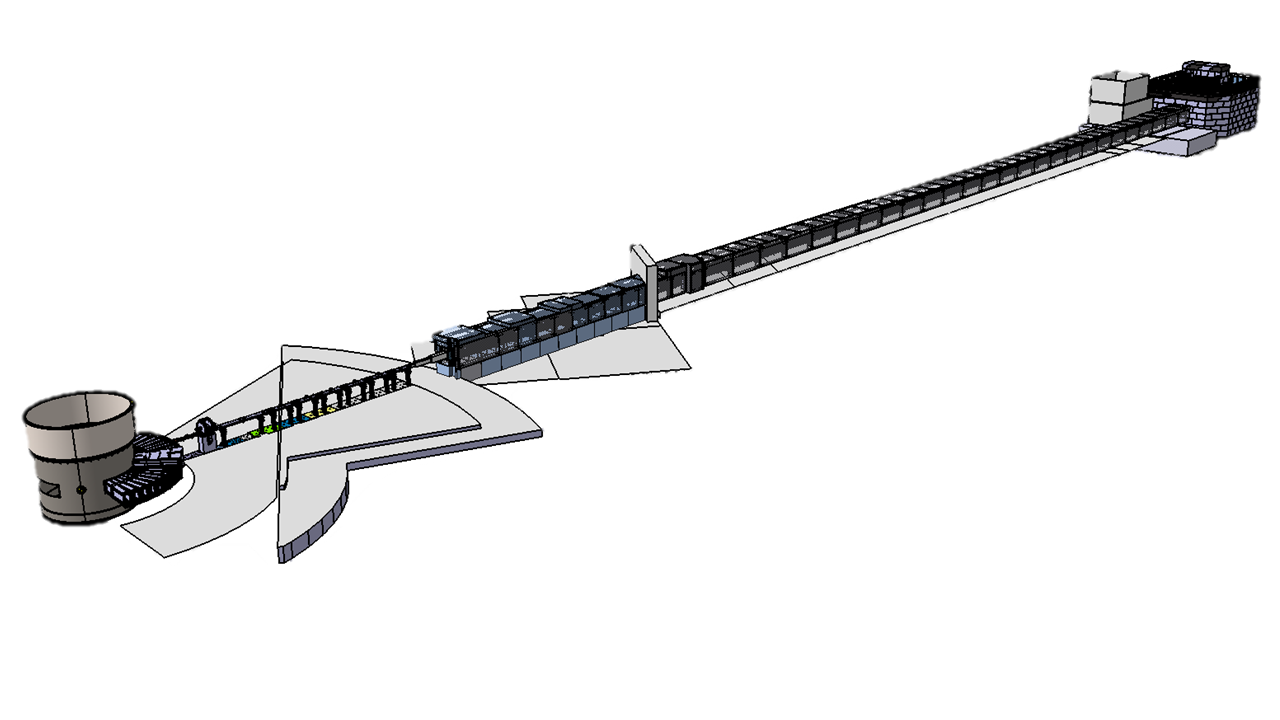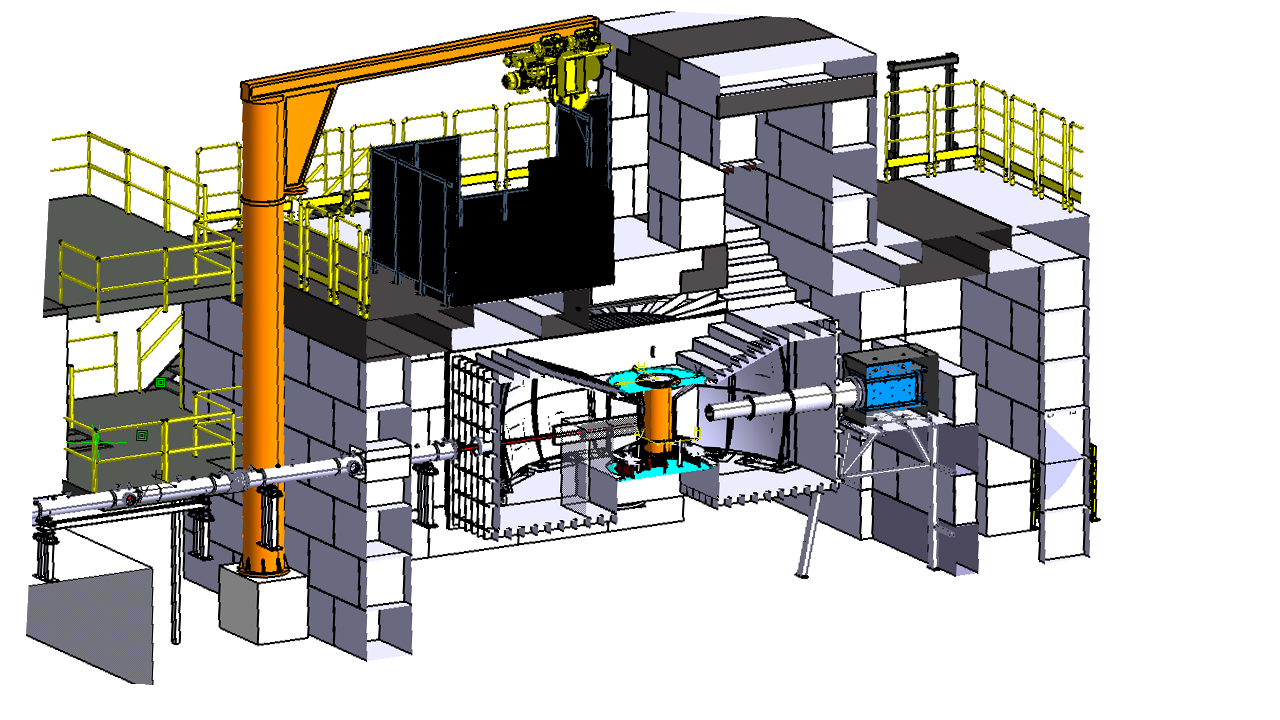Miracles Instrument
MIRACLES will be the neutron time-of-flight backscattering spectrometer of the European Spallation Source. ESS-Bilbao is the primary partner in the design, construction, installation and commissioning of the instrument, with close collaborations with the University of Copenhagen and the European Spallation Source.

GOALS
1.
Provide an energy transfer range of ℏ? ≈ 1 meV.
2.
Dynamic wavelength range of approximately 1.5 Å centered at the elastic line.
Variable elastic energy resolution, δ(ℏω).
3.
Best energy resolution achivable 2 µeV.

SCOPE
MIRACLES will be one of the ESS long instruments (162.5 m from source to sample) located at the west sector. The design of the primary spectrometer (that tailors the energy and shape of the neutron pulse arriving to the sample) is optimized to transport cold neutrons with a neutron energy < 20 meV.
The core of the instrument is the near-backscattering system sample-analyzer-detector. High resolution will be achieved using a 150º coverage panel analyzer of radius 2.5 m covered with bent silicon crystals. A 3He detector array assembly will be strategically located around the sample chamber to collect efficiently the backscattered neutrons, keeping the high-resolution performance of the spectrometer.
MIRACLES will provide an energy transfer range of ℏ? ≈ 1 meV, with a dynamic wavelength range of approximately 1.5 Å centered at the elastic line, the largest of any backscattering spectrometer. Additionally, the incident energy of the spectrometer can be shifted within the cold neutron interval, from 0 to 20 meV, to allow the measurement of low-energy inelastic excitations.
Backscattering Spectrometer
MIRACLES will be the time-of-flight backscattering instrument of the European Spallation Source. Revealing dynamic processes over a wide energy range, it will serve life science, polymer science, energy materials, magnetism studies and much more. The configuration of the long time-of-flight primary spectrometer and the large backscattering secondary spectrometer will give unprecedented energy resolution in accelerator-driven neutron source spectrometers, with an outstanding performance and versatility due to the flexibility of tuning energy resolution from a large dynamic range and performing quasielastic and inelastic neutron scattering experiment (QENS and INS) in a wide collection of operation modes.
Experimental Station
ESS-Bilbao is the primary partner in the design, construction and commissioning of the instrument, with close collaborations between ESS-Bilbao, the University of Copenhagen and the European Spallation Source.
The design of the primary spectrometer (that tailors the energy and shape of the neutron pulse arriving to the sample) is essentially simple, but smartly designed to transport cold neutrons with a neutron wavelength between 2 and 20 Å. The neutron beam extraction system has been optimized for an efficient neutron collection and transport, according to its view of the ESS butterfly moderator. The guide presents a curve, extended throughout the bunker and the D03 hall, to avoid direct line of sight of unwanted fast neutrons, thus minimizing the spectral background.
A key characteristic of the performance of the MIRACLES instrument is the outstanding flexibility to cover a wide range of neutron beam energy probing the sample for quasielastic and inelastic neutron scattering experiment (QENS and INS), taking advantage of the long pulse of the ESS neutron source with an optimized chopper cascade to tailor this neutron pulse and select the required energy range.
The core of the instrument is the sample-analyzer-detector near-backscattering geometry of this type of instrument. High resolution will be achieved using a 150º coverage panel of Si(111) analyzer bent crystals, with a fixed analyzer radius of 2.5 m. A 3He detector array will be strategically located around the sample chamber to collect efficiently the backscattered neutrons, with recent efforts oriented to reduce, to a minimum dimension achievable, the distance between the sample and the detectors, and improving the backscattering geometry.
Future upgrade will include full analyzer coverage, with a Si(311) analyzer of the same size, to the other side of the vessel, aimed to explore high resolution QENS and INS measurements centered at higher energies.
Backscattering System
In-Bunker beamline

SCIENCE CASE
The purpose of the MIRACLES instrument will be to provide insight into the dynamic processes over a wide field range, such as life science, polymer science, energy materials, magnetic materials and else. Its design is oriented towards performing quasielastic and inelastic neutron scattering experiment (QENS and INS) in a wide collection of operation modes, with an outstanding performance and versatility with its tunable energy resolution from a large dynamic range.
Life sciences, molecular dynamics, and water dynamics
- Degenerative diseases: Alzheimer, Parkinson, Cancer
- Protein dynamics and enzyme catalysis
- Pharmaceutical studies: drug implementation/delivery
Energy sciences:
- Fuel cells and H2 storage (hydrides)
- Proton diffusion in MOFs
- Catalysis
Polymer sciences:
- Viscoelasticity
- Morphology-performance connections in e.g. organic electronic devices
Climate change:
- Ice formation
- Portland-alternative cements (water dynamics)
Next-generation magnetic materials:
- Molecular nanomagnets
- Spin dynamics in novel magnetic materials (spin ice, large SOC)









